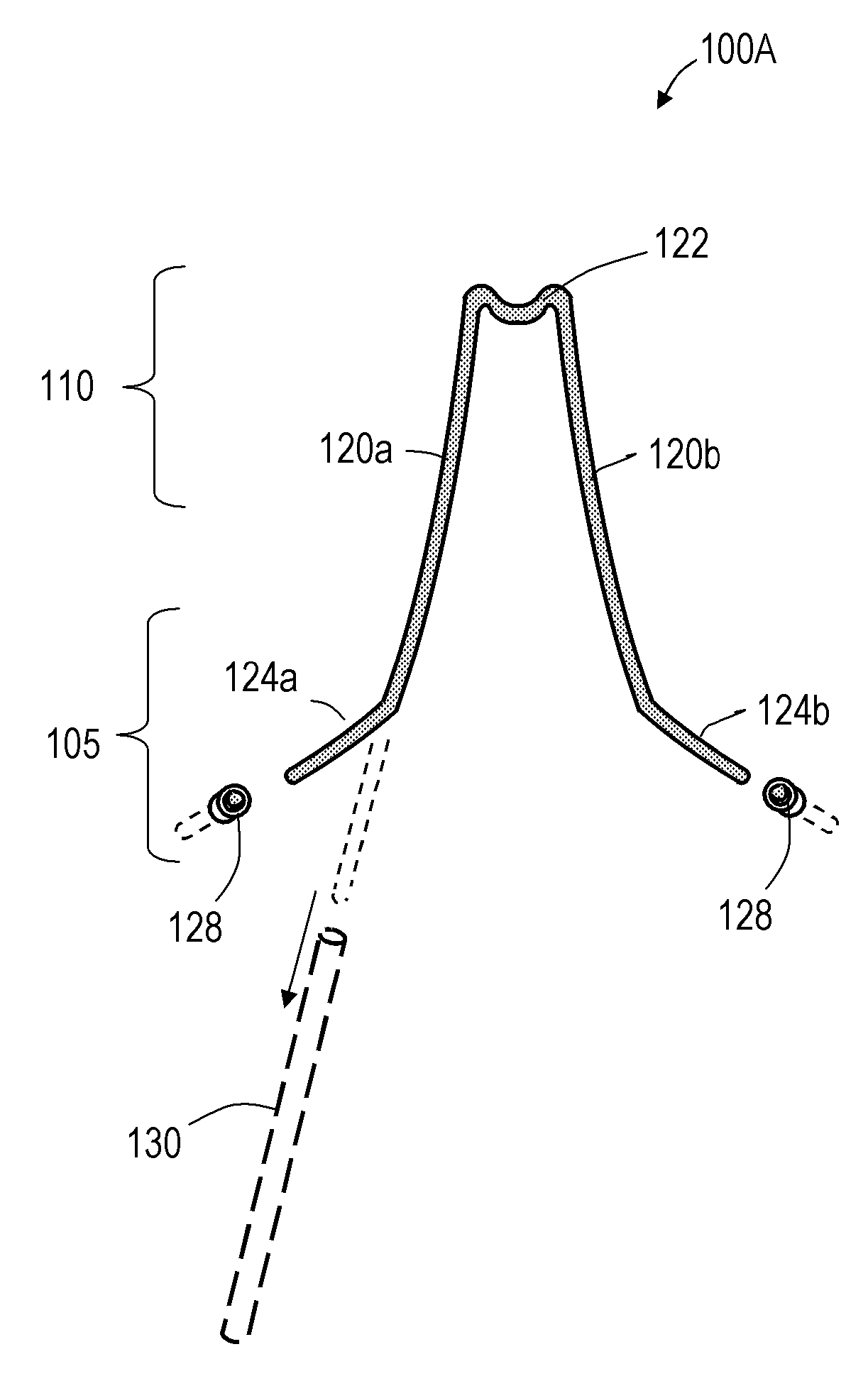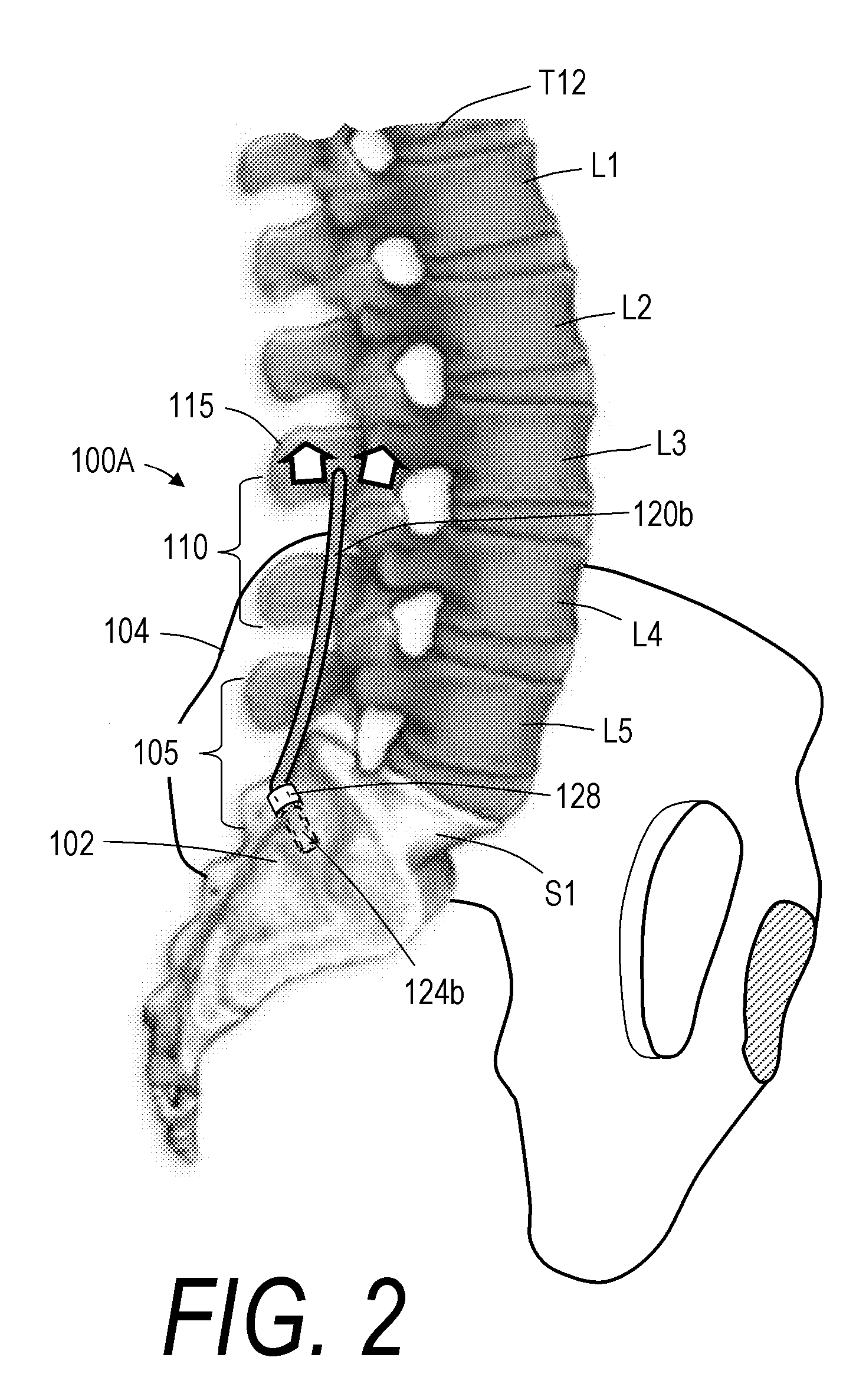Spine treatment devices and methods
a technology for spine disorders and implants, applied in the field of minimally invasive implant devices and systems, can solve the problems of increased risk, high invasiveness of fusion procedures, uncertain outcome and efficacy of these treatments, etc., and achieve the effect of limiting the extension and flexion of the spine segmen
- Summary
- Abstract
- Description
- Claims
- Application Information
AI Technical Summary
Benefits of technology
Problems solved by technology
Method used
Image
Examples
Embodiment Construction
[0029] Various embodiments of spine implant devices are disclosed herein that have similar components. As such, identical reference numerals are used to identify similar components of the different spine implant device embodiments.
[0030]FIG. 1 shows a posterior view of one embodiment of a spine implant device 100A together with a patient's lumbar spine and portion of thoracic spine (T12-L5), sacrum 102 and ilium 104. FIG. 2 illustrates a side view of the spine implant device 100A. The implant device 100A has a first end portion or inferior portion 105 that can be fixed to the patient's sacral or iliac bones, which provide a platform for stabilizing a lumbar spine segment or a lower portion of the thoracic spine. The implant device 100A has a second end portion or superior portion 110 that can engage a spinous process 115 of a superior vertebra, for example from L1-L5 or a lower thoracic vertebra. In the illustrated embodiment, the spine implant device 100A includes paired extending...
PUM
 Login to View More
Login to View More Abstract
Description
Claims
Application Information
 Login to View More
Login to View More - R&D
- Intellectual Property
- Life Sciences
- Materials
- Tech Scout
- Unparalleled Data Quality
- Higher Quality Content
- 60% Fewer Hallucinations
Browse by: Latest US Patents, China's latest patents, Technical Efficacy Thesaurus, Application Domain, Technology Topic, Popular Technical Reports.
© 2025 PatSnap. All rights reserved.Legal|Privacy policy|Modern Slavery Act Transparency Statement|Sitemap|About US| Contact US: help@patsnap.com



